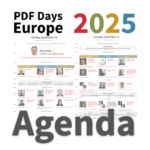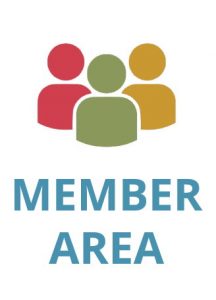Cloud in Omnichannel Communications

Carsten Lüdtge, a qualified journalist (University Degree: Diploma) and specialist editor, is responsible for press and public relations at Compart, an international manufacturer of software for customer communication, and is in charge of the Compart Group’s entire content management. He has PR expertise of more than 20 years with a … Read more


The understanding of what cloud means has evolved significantly over the last 20 years. Today, it is no longer just about storage capacities in a globally distributed infrastructure or the provision of software functions via the Internet. In the meantime, the cloud is also the place where complete applications are run in virtual platforms such as AWS, Salesforce or Azure. This also affects customer communication management (CCM) as a key area of IT infrastructure.
Companies often discover the great heterogeneity of corresponding tools when migrating to the cloud. It is not uncommon for almost every specialist application to maintain its own database for customer communication (silos), which then have to be adapted accordingly for each new communication channel. Apart from the high effort involved: these ad hoc adjustments do not guarantee that the corresponding applications are able to return all the information collected in the course of a communication process to a central system for managing customer relationships - for example, as a CRM system. But this is precisely the benefit of stringent customer communication that encompasses all analog and digital channels: the central availability of all customer-relevant data associated with a business transaction.
Event Driven Architecture
Monitoring communication plays a central role in customer communication management (CCM) in companies, public authorities and organizations. After all, you don't want to communicate out of the blue. If the e-mail comes back as a bounce or ends up in the recipient's spam folder, that's annoying - especially in the case of legally relevant documents or processes. So how do I ensure that the document actually reaches the recipient and is read by him (ensured delivery)?
In other words, the CCM system must be able to switch to a different communication channel if necessary so that the document or message actually reaches the recipient. Ideally, this happens automatically, with the cheapest and fastest channel always being used first. This means that if, for example, an e-mail containing an important and time-critical document cannot be delivered (because, for example, the address is incorrect or the incoming mail server is overloaded), the system could then send a messenger message (SMS) to the recipient via an appropriately configured workflow, informing him that an important document is ready for him to download (e.g., in the customer portal) - provided that his telephone number is known. If the recipient does not respond to this SMS, the next option would be to send a conventional letter.
What is needed is a CCM architecture that reacts automatically to situations of this kind. An important technological component or method for establishing such an event-driven system (Event Driven Architecture) are so-called web hooks - a kind of request with information on events that have occurred within a communication process, for example the status code of an attempted e-mail delivery as well as an ID with which the original transaction can be "identified" at any time (which document is to be sent to whom?).
The CCM system and other applications (e.g. mail servers) interact with each other via this request, which is practically a URL. If a document cannot be delivered electronically (by e-mail), the CCM receives the corresponding message via the web hook, whereupon another communication channel is activated via the workflow described above. The document can be identified via the ID it contains.
With solutions such as DocBridge® Gear, such workflows can be configured - for example, to automatically intercept the "email bounce" in the example described above and trigger a new transaction. These advanced processing scenarios, which can also be implemented in the cloud, are now part of the basic requirements of a modern CCM.
Case study: Creating a unified CCM foundation in the cloud
Here's an example from a European service provider: Like many large providers, this company faces the challenge of balancing increasing customer demands for responsiveness with the limited scalability of its business applications' CCM capabilities. It has to deal with the increasing number of digital communication channels as well as an ever-accelerating pace.
Added to this: As a result of acquisitions and mergers, the company had grown considerably in recent years - and with it the heterogeneity in the IT landscape; a proliferation of different applications. The service provider therefore decided to switch to Salesforce, one of the world's leading cloud-based CRM platforms.
The company's long-term goal is to closely link CRM and CCM in the interest of optimal customer communication, to harmonize the CCM capabilities of the various applications with each other, and to gradually move them to the cloud. The important thing here is that all information from the various communication processes (digital and analog) should flow into the new CRM system and be held there centrally - from all channels. If this feedback were incomplete (for example, limited to digital interaction), this would lead to "two-class communication.
The service provider therefore developed an infrastructure with a uniform but personalized basis of functions that all applications can access - regardless of whether they are still running on the company's servers or already in the cloud. These functions are made available in the "cloud" in the form of containers. In this way, the complexity of the previous infrastructure (many heterogeneous tools and associated permanent adjustments) is significantly reduced.
Event-driven CCM architecture for transactional operations
A central role in this new infrastructure is played by the DocBridge® Gear and DocBridge® Impress solutions. While the former is the central platform for configuring and automating processes for all customer communication - for specialist applications as well as for Salesforce applications - DocBridge® Impress is responsible for document creation, including interactive functions for generating personalized, form-based documents (Guided Interactive). Via a powerful interface (REST API) provided by Compart, all business applications and data sources are brought together in a single cloud infrastructure.
Processes for the following CCM scenarios can be configured with the two solutions:
- Interactive processing
- Batch processing (invoice runs, order and purchase order confirmations, etc.)
- Transactional dark processing (contract changes, terminations, cancellations, proof of connections, etc.)
An important aspect in this context is the event-driven monitoring of communication or feedback from dispatch (closed loop): Using DocBridge® Gear, advanced workflows are to be developed that, for example, detect that an invoice sent by e-mail has not been received. In this case, for example, an SMS or WhatsApp message could be automatically generated for the recipient (provided the phone number is known), informing him that an important document is waiting for him. If the customer does not respond either, the next step would be a workflow that automatically sends the invoice as a classic letter to the postal address.
The fact is: Such advanced scenarios are now essential for a company's modern customer communication. By means of an intelligent CCM infrastructure, it is enabled to react to transactional processes in a recipient-specific manner almost without manual intervention. In an increasingly competitive environment, where the quality of the service to be provided alone is no longer sufficient for long-term customer loyalty, it is precisely this proactive communication that can make the decisive difference.
This principle of proactivity is also a sign that the relationship between CRM and CCM has fundamentally changed. The two areas are put on an equal footing in terms of accessibility and scalability in the cloud by this project, reflecting the new role relationship of a CRM system: it not only manages customer data and experience, but also relies on a robust infrastructure for personalized omnichannel communication to spring into action. This is capable of progressively integrating all data sources and communication channels required for business performance.
More than two million communications daily
The architecture developed by Compart has a high level of user convenience. Above all, access to the functions of DocBridge® Gear and DocBridge® Impress via powerful REST API is a major advantage. Even more, the interface makes it possible to query different data sources and customize the results "on the fly". Any business application that can exchange and process data in JSON or XML format thus has access to the entire functional spectrum of CCM Basis. The danger of "communication silos" or "two-speed communication" emerging or persisting is thus averted.
In addition, the new CCM architecture with DocBridge® Gear as the central platform will enable the standardized, automated processing of more than two million communication transactions per day at the service provider , including one and a half million SMS and half a million e-mails; a volume of communication for which cloud-based platforms are not designed per se - no matter how powerful they may be. With Compart's architectural approach, this is not a problem.
Compart is an internationally active manufacturer of software for customer communication management. The company, with headquarters in Böblingen, has been present in the market for more than 30 years and has branches in Europe and North America. The scalable, platform-independent and easy-to-integrate solutions cover the entire cycle of document and…
Read more




